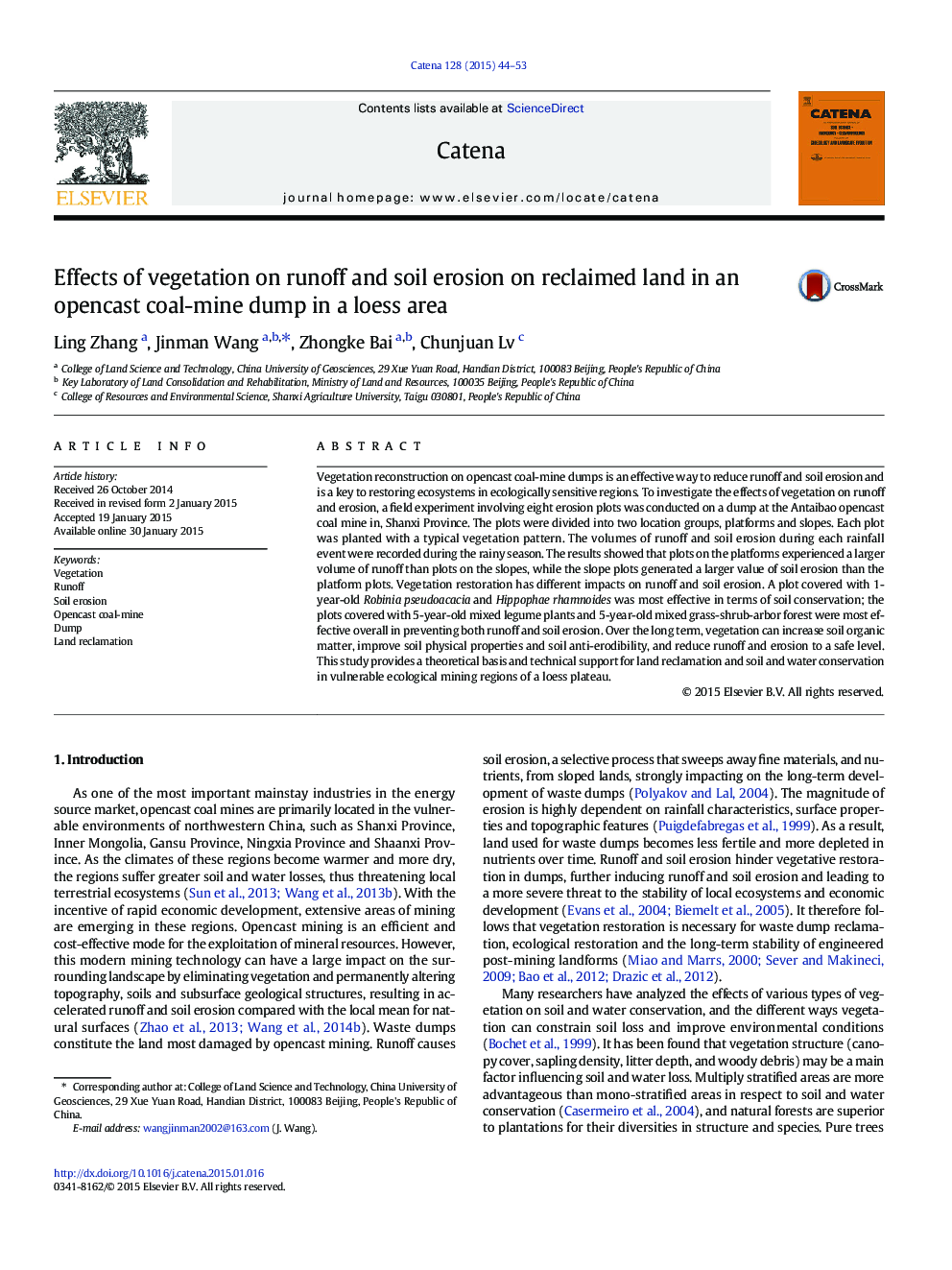| Article ID | Journal | Published Year | Pages | File Type |
|---|---|---|---|---|
| 4571177 | CATENA | 2015 | 10 Pages |
•Runoff and soil erosion from platforms and slope plots in waste dump are compared.•Re-vegetation can reduce runoff and soil erosion in platforms and slopes of dump.•Vegetation has the same function on water and soil conservation in waste dump and original landform.
Vegetation reconstruction on opencast coal-mine dumps is an effective way to reduce runoff and soil erosion and is a key to restoring ecosystems in ecologically sensitive regions. To investigate the effects of vegetation on runoff and erosion, a field experiment involving eight erosion plots was conducted on a dump at the Antaibao opencast coal mine in, Shanxi Province. The plots were divided into two location groups, platforms and slopes. Each plot was planted with a typical vegetation pattern. The volumes of runoff and soil erosion during each rainfall event were recorded during the rainy season. The results showed that plots on the platforms experienced a larger volume of runoff than plots on the slopes, while the slope plots generated a larger value of soil erosion than the platform plots. Vegetation restoration has different impacts on runoff and soil erosion. A plot covered with 1-year-old Robinia pseudoacacia and Hippophae rhamnoides was most effective in terms of soil conservation; the plots covered with 5-year-old mixed legume plants and 5-year-old mixed grass-shrub-arbor forest were most effective overall in preventing both runoff and soil erosion. Over the long term, vegetation can increase soil organic matter, improve soil physical properties and soil anti-erodibility, and reduce runoff and erosion to a safe level. This study provides a theoretical basis and technical support for land reclamation and soil and water conservation in vulnerable ecological mining regions of a loess plateau.
